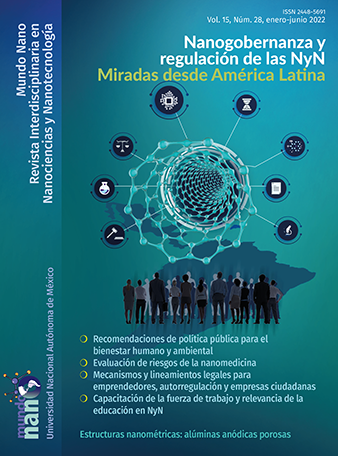Presentación
Contenido principal del artículo
Resumen
El presente número de Mundo Nano está dedicado al asunto de la gobernanza, las políticas públicas y la regulación de las nanociencias, la nanotecnología y sus productos. El número cuenta con textos que analizan la situación de las nanotecnologías en seis países de la región: Argentina, Brasil, Costa Rica, México, Uruguay y Venezuela. El lector encontrará dos textos sobre gobernanza, uno con énfasis en nanomedicina y otro en el aspecto laboral; de regulación también hay textos sobre las experiencias brasileña y argentina. Hay dos textos que analizan las políticas públicas, uno para el caso en México, y aspectos de innovación de Costa Rica, Uruguay y Venezuela, tres países donde el tema de la nanotecnología es emergente.
Descargas
Detalles del artículo

Mundo Nano. Revista Interdisciplinaria en Nanociencias y Nanotecnología, editada por la Universidad Nacional Autónoma de México, se distribuye bajo una Licencia Creative Commons Atribución-NoComercial 4.0 Internacional.
Basada en una obra en http://www.mundonano.unam.mx.





